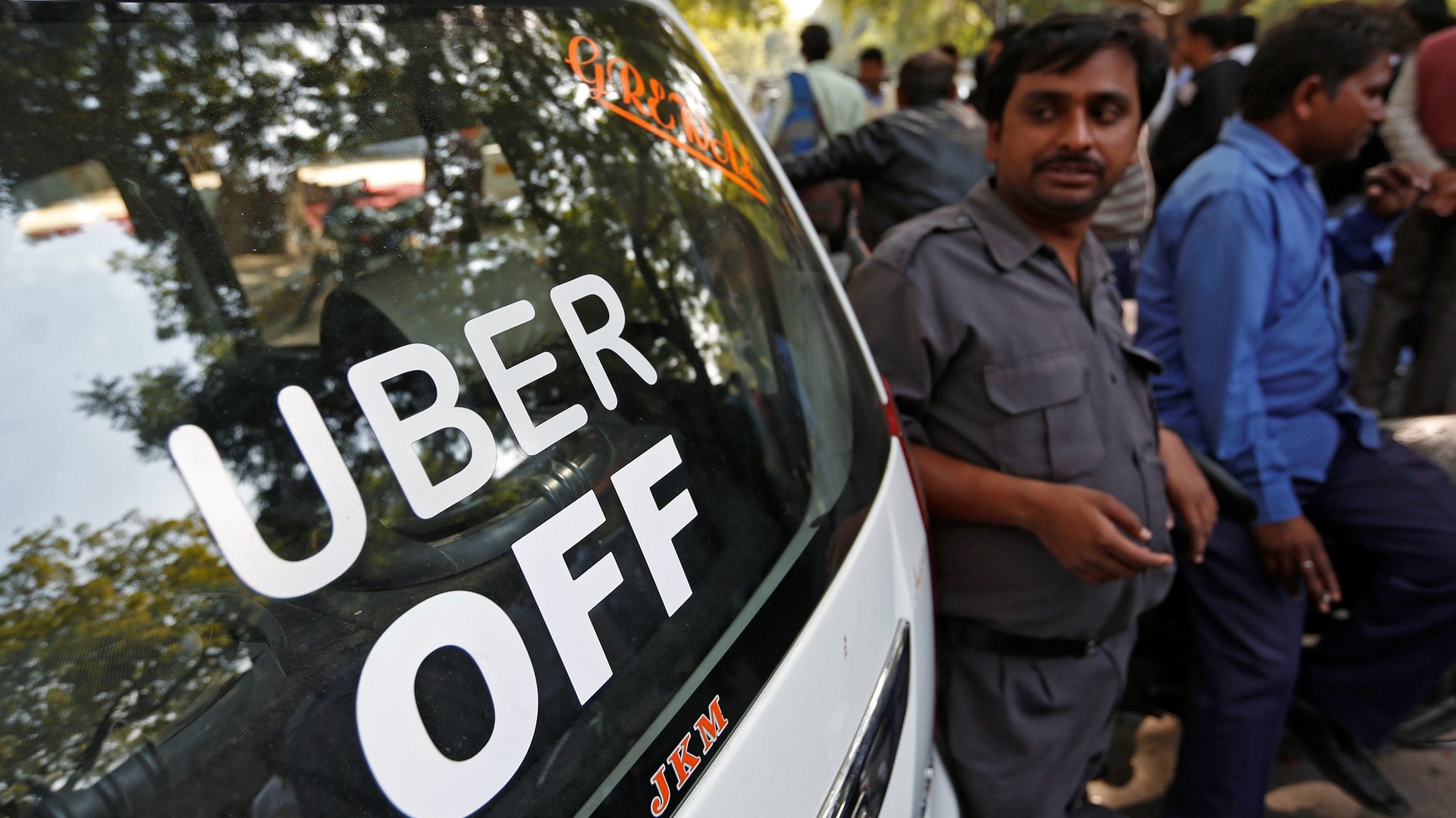Uber shouldn’t reverse out of India, no matter what Softbank says
India’s taxi wars are headed for a new turn.


India’s taxi wars are headed for a new turn.
After fiercely battling homegrown rival Ola for nearly five years, San Francisco-based Uber may finally be slowing down in India.
Uber’s latest and largest investor, Softbank, wants the company to focus only on its core markets—the US, Europe, Latin America, and Australia, Rajeev Misra, a board director with Softbank, told the Financial Times (paywall) on Jan. 19. Misra is set to join Uber’s board soon.
Presumably, this would require Uber to shift its focus away from the more nascent Asian and African markets. “This is a growth company, this is not just about them cutting their losses,” Misra told the newspaper, adding that the core markets showed better growth prospects.
Last month, Softbank plowed over $7 billion into Uber, picking up a 15% stake. In India, the Masayoshi Son-led group is a majority stakeholder in Ola, too. Softbank also holds stakes in other Asian ride-hailing firms like Singapore-based Grab—which operates in neighbouring nations like Malaysia, Indonesia, Philippines, Vietnam, Thailand, Myanmar, and Cambodia—besides China’s ride-hailing leader, Didi.
Misra’s statement has fired up speculation that Softbank plans to defuse the competition between Uber and the local Asian players. Some also believe that Softbank may be looking at a merger of sorts between Uber and Ola.
However, analysts believe that such a move may be a bit far-fetched at the moment. Instead, they argue that Uber packing up from India would actually be a bad idea.
“Well, it is true that Softbank has tremendous clout given its investments. Traditionally, Softbank has supported local players over Uber in these markets,” Anindya Ghose, the Heinz Riehl professor of business at New York University (NYU), told Quartz. “But to me, it does not seem like a great decision for Uber to move out of India. First, India continues to be a very important market and Uber’s performance in India has been stronger than ever of late.”
Experts also point out that Uber has not had an easy run in its core markets, and exiting from India might just make things worse for it. ”The point being, is the US a big enough market for them to focus on? I don’t really think so,” Yugal Joshi, a startup analyst at the Everest Group, said. In the US, Uber faces stiff competition from Lyft, and in Europe, too, it has had its share of run-ins with the law, Joshi added. Uber was stripped of its London license and its low-cost UberPop service was banned in France, Italy, and Germany.
In India, Uber covers only 29 Indian cities compared to Ola’s hundred-plus. Uber’s market share touched 50% in mid-2017 while Ola Cabs had 44.2%, data from research firm KalaGato show. Uber has experimented with new formats like bike and auto rickshaw services in India, but those have not had much success so far.
“This is a baseless speculation,” an Uber spokesperson told Quartz, referring to rumours of Uber scaling back its India operations. “Our business in India is stronger than ever and we are 100% committed to serving our riders and driver partners in India.”
Bleeding dry
In the past, Uber has retreated from at least two other markets and merged its business with local competitors.
In 2016, Uber shut shop in China after failing against local firms and sold its business in that country to rival Didi Chuxing. A year on, it got beat in Russia and merged with local technology group Yandex.
In India, where Uber claims to be doubling its business annually and clocking over a million trips a day, the company’s ride has hardly been smooth. Uber has been at loggerheads with Ola ever since its entry in 2013, three years after the domestic rival was founded. Ola has even dragged Uber to court for allegedly flouting laws.
Meanwhile, both Ola and Uber have bled their balance sheets. Ola posted losses in thousands of crores and Uber has lost billions of dollars globally.
Uber also faced troubles after one of its drivers was convicted of raping a passenger in New Delhi in December 2014. Subsequently, the service was temporarily banned in the capital. Last year, a top Uber executive was shown the door for alleged misconduct in the aftermath of the 2014 incident.
Stay the course
Cracking its core markets will be harder for Uber because it “faces even stiffer competition (there) than in India,” NYU’s Ghose said. “In India, it is primarily a duopoly with two large competitors, whereas in the core markets, it is often an oligopoly with multiple large competitors.”
So Softbank may create a monopolistic structure of sorts to curb this bleeding, though a complete exit or merger might be far-fetched, Jaspal Singh, co-founder of research and advisory firm Valoriser Consultants, had said last November when Uber’s board approved the Softbank investment.
Generally, mergers happen when a market has reached some maturity, some potential, Joshi explained. ”India is still a large market. Beyond Ola, I’m hard-pressed to think of any app-based service, excluding Uber,” he said. Ola, he said, is not as powerful as China’s Didi and India hardly has any strong taxi unions like those of New York and London.
“Just from a competition perspective, if Uber has a good chance anywhere, it has to be in India.”